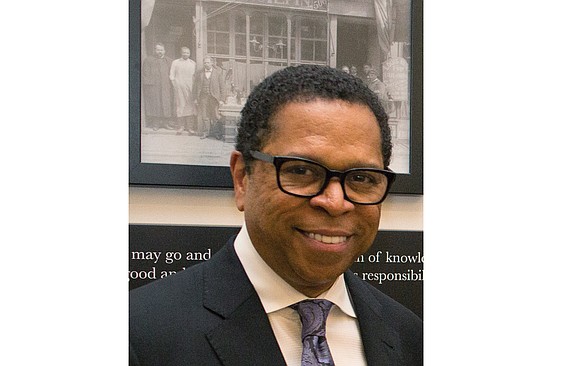Black History Museum board calls for Confederate statue removal
9/15/2017, 10:33 a.m.
By Bonnie V. Winston
The Confederate statues on Richmond’s Monument Avenue should go.
That sentiment was expressed by the board of directors of the Black History Museum and Cultural Center of Virginia in a letter submitted last week to the Free Press.
“Silence is not an option,” Adele Johnson, the museum’s interim executive director, wrote on behalf of the board. “Silence is complacency, and we cannot be complacent.
“Removing Confederate monuments is a step out of the many years of complacency and acceptance,” the letter stated.
“Let the monuments and what they represented remain part of history, not the present. Now is the time for us all to applaud and support the decision to move forward.”
Ms. Johnson said the board discussed the Confederate monuments in late August and approved the letter following the violent outbreak in Charlottesville, where white supremacists protesting that city’s planned removal from public parks statues of Confederates Robert E. Lee and Stonewall Jackson clashed with counterprotesters.
Heather Heyer, a 32-year-old Charlottesville paralegal, was killed and 19 others were injured when a white supremacist drove his car into a crowd of counterprotesters.
“Charlottesville was a flashpoint,” said Dr. Monroe E. Harris Jr., a Richmond oral surgeon and chairman of the 11-member museum board.
“It was the sentiment of the board after seeing the violence in Charlottesville and what those statues represent that they should be removed and put in a more proper place.”
He said scholars and experts should help decide where that place is.
By removing the statues, he said, “it gives us a feeling that people understand how these monuments represent oppression and terror to a large segment of this community. We don’t need that anymore. We don’t want to reach back and try to romanticize things.”
Dr. Harris views the Black History Museum as a “counterbalance to the celebration of those (Confederate) statues” because it recognizes “the contributions of African-Americans to this state and the world.”
He invited people to come to the museum, located at 122 W. Leigh St. in Jackson Ward, to see that part of history.
“We realize that history is not just about the past, but history is being made every day and we must take responsibility for this history,” the letter stated.
“We condemn and despise the rise of hate that was expressed by the neo-Nazis, the KKK and the white supremacists. But they remind us that some people cannot accept that the world has changed around them …”
The board called on people to become ambassadors of the “new Richmond.”
Dr. Harris acknowledged that the city has many pressing problems that require resources. “Saying that removing the statues should be No. 1 on the list is short-sighted,” he said. “But it should be somewhere on the list.
“What we need is reconciliation,” Dr. Harris said, “and moving forward in an honest way.”
A full text of the letter appears on Page A7.






